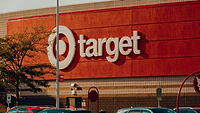Survey Finds Organized Retail Crime Still Prevalent Across the Industry

When it comes to the organized crime gangs that wreak havoc on retail stores, inventory and the bottom line, retailers are getting more aggressive in their efforts to fight the problem.
According to the National Retail Federation’s 11th annual Organized Retail Crime Survey, which polled 67 senior retail loss prevention executives, nearly all (97%) retailers surveyed report that they have been a victim of ORC in the past year, up from 88.2 percent who said so last year. And, of those who have been victimized over the past year, the survey also found more retailers this year have seen an increase in ORC activity at their own company (84.9% versus 60.3% last year).
As such, more companies are investing in tools and resources to combat the growing problem. Overall, 47 percent of those surveyed say they are allocating additional resources of some kind, up from 41.3 percent last year. Specifically, the survey found 31.8 percent of retailers are allocating additional resources to staffing, up from 22.7 last year, and nearly one-quarter (24.2%) are adding additional budget resources.
“Even with state-of-the-art technology available, trained employees on the ready, extensive partnerships with all levels of law enforcement and additional resources on hand, retailers continue to grapple with the challenges that come with fighting organized retail crime,” said NRF Vice President of Loss Prevention Bob Moraca. “Brazen and often dangerous criminals are finding new ways every day to manipulate the retail supply chain; from the docks where merchandise comes in to criminal flash mobs that involve several individuals running into a store at once, the methods used by crime gangs today run the gamut. These new criminal methods are making it even more crucial for retailers and law enforcement to work together to combat this crime.”
Given the severity and growth of the issue, retail loss prevention executives were asked about the level of understanding they feel top management has of ORC. The survey found 62.7 percent believe senior leaders understand the severity and complexity of the issue, up from 60.5 percent last year.
30 States now have ORC laws; Federal legislation still on wish list
Five states enacted their own state legislation around ORC in 2015, bringing the total to 30 states that now have laws against criminals who are found to be associated with an organized retail crime gang.
NRF asked retailers about the support they get from law enforcement in the states where they have a presence and that have ORC laws, and the survey found 15.4 percent of those surveyed say they have noticed an increase in support from federal law enforcement, up from 9.6 percent who said so last year; 43.1 percent say they’ve noticed an increase in support from local/county law enforcement and 24.6 percent say support from state law enforcement has grown.
Because organized retail crime gangs have the means to transport stolen products through multiple states and even overseas, the need for federal legislation is greater than ever. NRF for the first time asked if they believe a federal ORC law is needed to effectively combat the issue, and 78.8 percent said yes.
“Organized retail crime continues to be an issue plaguing retailers, and there continues to be a need to pass strong ORC legislation that defines the issues and provides law enforcement with the necessary tools to help retailers combat the issue,” said NRF Vice President of Supply Chain and Custom Policy Jon Gold.
“These vast and often dangerous crimes are not limited to any state or jurisdiction and are why we continue to push for federal legislation.”
Retailers on average report they have lost $453,940 per $1 billion in annual sales over the past year. Additionally, the survey found on average retailers allocate approximately $434,032 to specific organized retail crime personnel in their company.
Organized retail crime gangs often use fake locations for their extensive operations, including store fronts, pawn shops, flea markets and kiosks. According to the survey, nearly six in 10 (59.1%) say they have recovered stolen merchandise from a physical fence location in the past 12 months. When criminals aren’t using actual locations to house their stolen goods and run their crime operation, many turn to the internet for the anonymity it offers. Over the past year, 59.7 percent of retailers surveyed say they have identified or recovered stolen merchandise from an e-fencing operation.
Savvy criminals are also finding ways to manipulate well-intentioned store return policies. According to the survey, two-thirds (66.7%) of respondents say they have experienced thieves returning stolen merchandise for store credit, to then sell that merchandise credit to secondary market buyers or sellers.
For the first time NRF asked where retailers have recovered the stolen merchandise credit cards, and most say they have found them on websites (54.5%), at pawn shops (24.2%) and at check cashing stores (13.6%).
Organized retail crime affects retailers in several ways, and one of the biggest problems happens before the product even reaches the store. The survey found 37.9 percent of those polled have experienced cargo theft in the past year, up from 35.4 percent last year.
Top Locations for Organized Retail Crime Activity
Organized retail crime gangs wreak havoc throughout the country, but many cities have remained top locations for ORC activity for the past several years, including Los Angeles, Miami and San Francisco. The top 10 locations that retailers say have the most criminal activity are (by rank):
1. Los Angeles
2. Miami
3. Chicago
4. New York
5. Houston
6. Arlington/Dallas/Ft.Worth
7. San Francisco/Oakland
8. Baltimore
9. Orange County, Calif.
10. Northern New Jersey
Looking for a reprint of this article?
From high-res PDFs to custom plaques, order your copy today!





